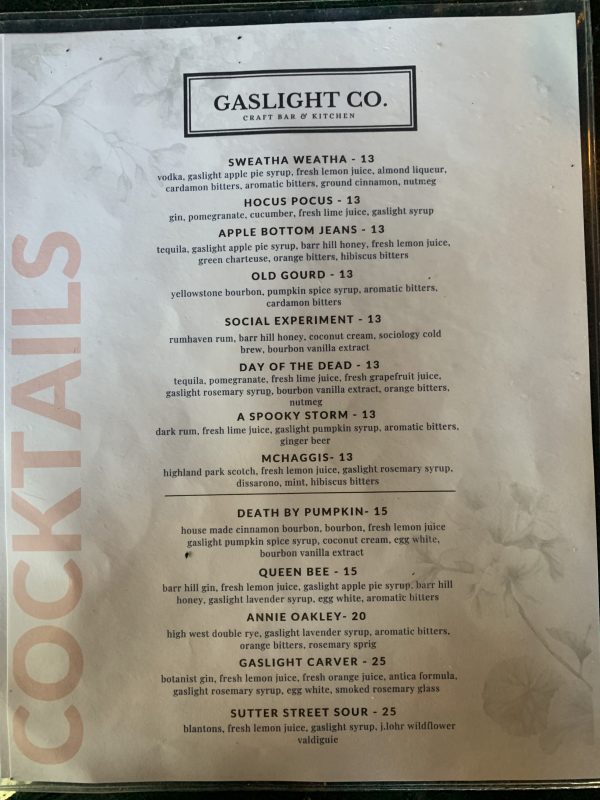Amazon Basics 21" Hardside Carry-On Luggage, Hardshell Suitcase With Wheels, Expandable For Up to 25% More Space, With Scratch-Resistant Surface, Four Multi-directional Wheels, Black
$53.99 (as of April 24, 2025 06:56 GMT +00:00 - More info)In the bustling eateries of New York City, a new scam has emerged, as pointed out by a TikTok user. This trick targets solo diners and exploits their generosity. Imagine you’re savoring a meal by yourself when a seemingly polite stranger asks to share your table due to space constraints. They propose splitting the bill, but in reality, they aim to leave you with the entire tab. This manipulative scheme is gaining traction, reminding you to stay vigilant and to think twice before agreeing to share both table and expenses with someone you don’t know. Have you ever felt the hustle and bustle of New York City and thought about enjoying a quiet meal alone in one of its many restaurants? If so, you might want to be wary of your surroundings, especially with the rise of a new scam targeting solo diners, as shared by a TikTok user.
There’s A New Restaurant Scam In NYC, According To TikTok
Even in a city as dynamic and thrilling as New York, the presence of scams remains a sad reality. Recently, TikTok has brought to light a sneaky scam affecting solo diners in the city. This scam plays on the empathy and generosity of individuals, tricking them into footing hefty restaurant bills. Read on to discover more about the scam, how it works, and what you can do to protect yourself.

Get an Official Zagat Restaurant Guide
The TikTok Tale: How It Unfolded
The story begins at Nom Wah, a popular dining spot, where a TikTok user shared her close encounter with this scam. Dining alone, she was approached by a woman who seemed to need a table. Due to the restaurant being busy, the woman had to relocate and asked if they could share a table for a simple cup of tea.
@paretay
Story time #nyc #scams #fypシ
♬ Brunch (Lofi) – Muspace Lofi
Interestingly, the TikTok user had come across a prior warning about this exact ploy. She cleverly agreed to share the table but not the bill. Predictably, the other woman left without ordering, revealing her true intent. This situation usually ends with the scammer ordering extravagantly and then disappearing, leaving the trusting diner to pay the bill.
Why Does The Bill-Splitting Scam Work On Diners?
The effectiveness of this scam lies in playing on the kindness of diners. Imagine, a lone diner approaches you, merely seeking a place to sit. Most of us would accommodatingly agree, preferring harmony over potential conflict. It’s natural to think that someone needs help rather than suspecting a scam.
In a good-hearted scenario, sharing a bill simplifies things for the server, with one person paying and sorting out the amounts with their companions later. However, scammers exploit this goodwill, intending never to pay their fair share. Instead, they’ll offer a small payment or fabricate a reason to leave abruptly, sticking you with the entire bill. Though the scammer may not directly steal your money or information, they’ve scored a free meal at your expense.

Get an Official Zagat Restaurant Guide
Is NYC’s Restaurant Scam The New Dine-And-Dash?
If the bill-splitting scam feels familiar, it’s because it derives inspiration from the dine-and-dash scam. The latter involves diners consuming a meal and then sneaking out without paying. This act not only robs the restaurant but also inconveniences the servers, leaving them without tips and possibly in trouble with their management.
While the dine-and-dash scam targets the restaurant primarily, the bill-splitting scam zeroes in on individual diners perceived as vulnerable. Solo diners, often absorbed in reading or on their phones, seem like easy marks. The scammer might unobtrusively join their table and then, after ordering, disappear, leaving the target embarrassed and coerced into paying the bill quietly.
How To Protect Yourself From Restaurant Scams
Given the ingenuity of scammers, safeguarding oneself involves a mixture of vigilance and assertiveness. Here are some practical tips:
- Stay Alert: Always be aware of your surroundings and the people approaching you.
- Be Assertive: Politely decline if someone asks to share your table.
- Verify Requests: If someone insists on sitting with you, make it clear that sharing the bill is not an option.
- Inform Staff: Alert the restaurant staff if a situation feels off. They might be aware of ongoing scams and can provide assistance.
- Trust Your Instincts: If something feels wrong, it probably is. Don’t hesitate to act on your gut feeling.
The Emotional Toll of the Scam
Beyond the financial aspect, these scams often leave the victim feeling violated and embarrassed. You may question your judgment and feel a sense of betrayal, especially if you initially welcomed the scammer with good intentions. Understanding the emotional implications helps in better preparing and protecting oneself from such experiences.
Awareness and Prevention
Spreading awareness is key to combating these scams. By sharing these stories and tips, you can help create a community-wide vigilance, making it harder for scammers to find their next victim. Remember, your safety is paramount, and being informed is your best defense.
Conclusion
In a city perpetually on the move like New York, it’s crucial to stay one step ahead of potential scams. TikTok’s revelations about the new restaurant scam emphasize the importance of vigilance and assertiveness. By remaining alert and calmly handling suspicious situations, you can enjoy your dining experiences without the fear of falling victim to such deceitful tactics. Always remember to trust your instincts and, when in doubt, seek help from restaurant staff. Stay safe and savvy, and help others do the same by spreading the word.






